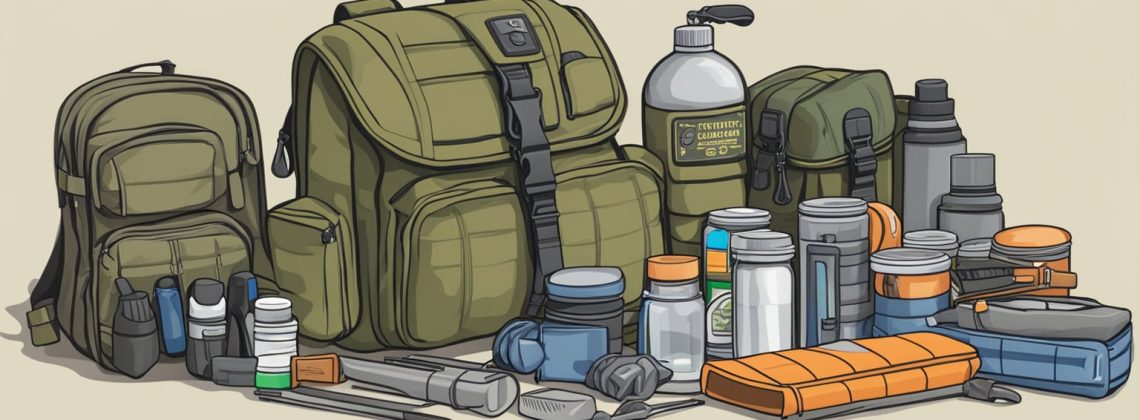
When considering emergency preparedness, two terms commonly arise: survival kits and bug out bags. While they may seem identical upon first glance, understanding the differences between these two types of emergency packs is crucial. Survival kits are generally designed for short-term scenarios. They focus on the bare essentials needed to survive for a few days—think first aid supplies, water purification tools, and emergency rations.
On the other hand, bug out bags are designed for longer-term survival situations, potentially lasting several days or weeks. They contain items to sustain you through various conditions you may encounter while having to evacuate quickly. The items may include more extensive supplies like shelter, comprehensive tools, more food and water provisions, and additional clothing. Recognizing which option is best suited for your needs depends on various factors, such as the potential emergency situations in your area, your personal circumstances, and how long you might need to rely on your supplies.
Key Takeaways
- Survival kits are for short-term emergencies, while bug out bags cover longer situations.
- Items included should be based on the duration and type of potential emergencies.
- Choosing the right option is based on personal needs and situational considerations.
Distinguishing Survival Kits and Bug Out Bags
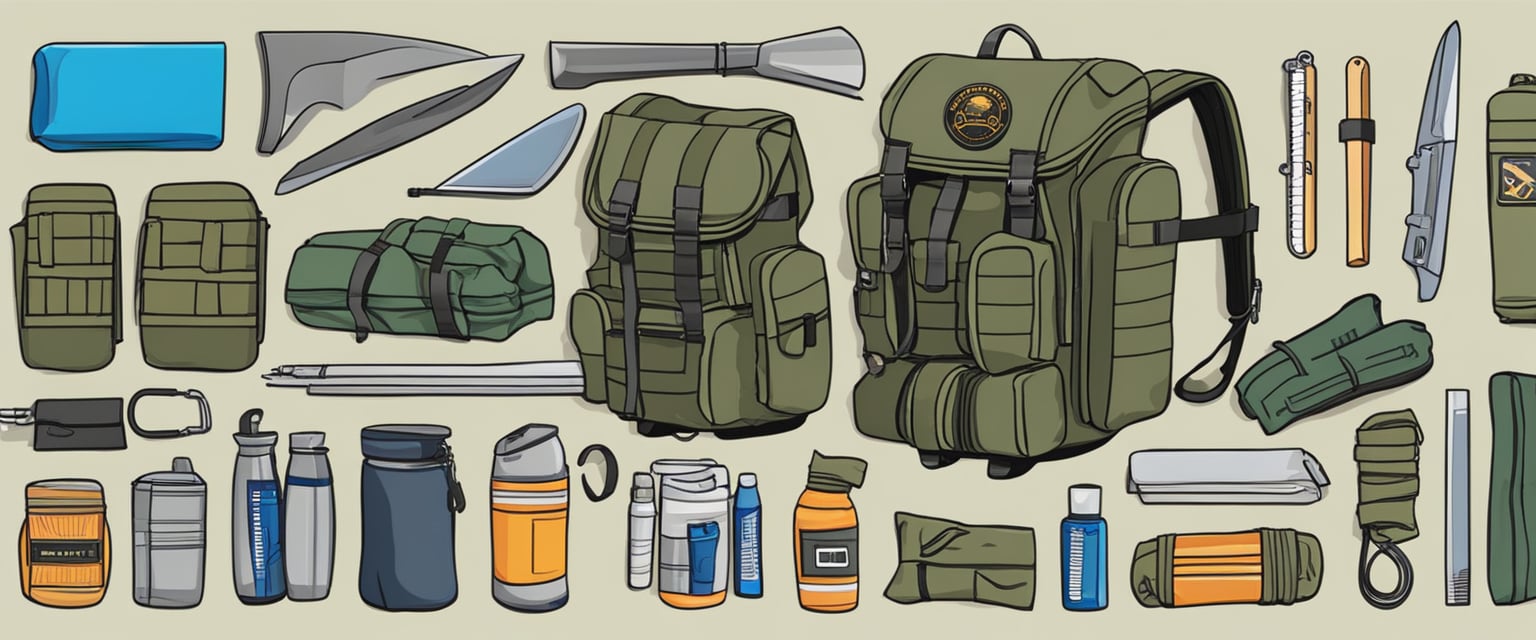
When you’re preparing for emergencies, you might come across two different terms: survival kits and bug out bags. While they may seem similar, they serve distinct purposes and have unique contents.
Survival Kits:
Your survival kit is typically a compact, portable collection of items essential for survival in an emergency. It’s designed to help you get through the first 72 hours after a disaster strikes.
- Contents:
- Basic necessities: water, food rations, a first-aid kit.
- Tools: multi-tool, pocket knife, flashlight, whistle.
- Protection elements: emergency blanket, poncho.
- Navigation aids: compass, maps.
Use Case: Keep a survival kit in your car, at home, or at work to ensure you can access fundamental supplies wherever you might be when disaster occurs.
Bug Out Bags (BOB):
On the other hand, a bug out bag is a larger, comprehensive pack that you grab when you need to evacuate quickly. It contains enough gear to sustain you for several days.
- Contents:
- Sustenance items: more extensive assortment of food and water, portable stove.
- Shelter: tent or space-saving alternative like a bivy sack.
- Clothing: change of clothes, durable footwear, weather-appropriate gear.
- Safety items: larger first-aid kit, fire-starting tools, signaling devices.
- Personal documents: copies of important documents, cash.
Use Case: You keep a bug out bag packed at all times, ready to take with you at a moment’s notice if you have to leave your home quickly and potentially for an extended period.
Essential Components of a Survival Kit
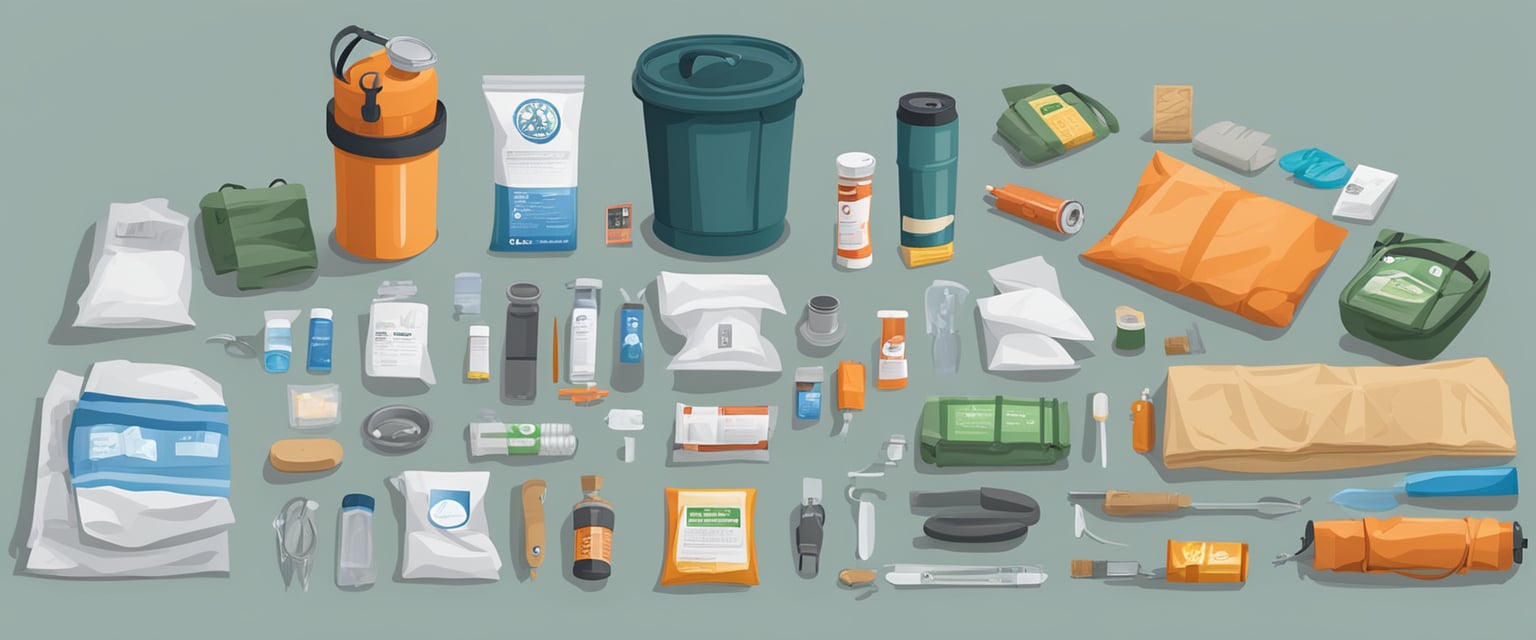
When you’re assembling your survival kit, focus on items that address first aid, nourishment, shelter, and navigation. It’s crucial for your safety and well-being to prioritize these categories.
First Aid Necessities
- First Aid Kit: A comprehensive kit including adhesive bandages, gauze, tape, and antiseptic wipes.
- Medications: Prescribed meds you might need, plus common over-the-counter options like pain relievers and antihistamines.
- Instruments: Tweezers, scissors, and a thermometer.
Food and Water Purification
- Non-Perishable Food: Energy bars, dried fruits, and nuts.
- Water Purification: Boiling equipment, water purification tablets, or a portable filter.
- Utensils: Compact cookware and utensils.
Shelter and Warmth Supplies
- Emergency Blanket: A lightweight, reflective blanket to retain body heat.
- Sleeping Bag: A compact, all-weather sleeping bag for rest.
- Tent: A portable, easy-to-assemble shelter.
Tools and Navigation Aids
- Knife: A multi-purpose tool for various tasks.
- Fire Starter: Matches, a lighter, or a fire steel.
- Compass and Map: Reliable tools for orientation without technology.
Key Features of Bug Out Bags
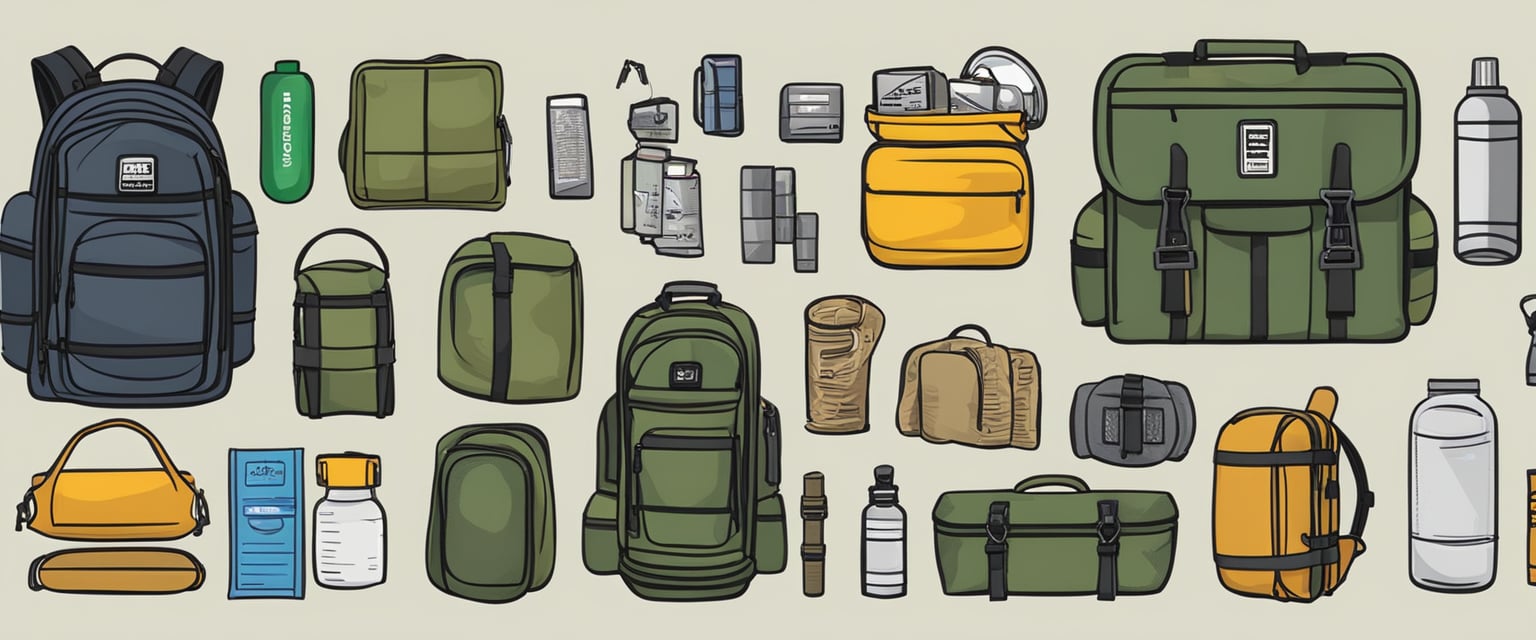
Bug out bags are tailored to equip you for evacuation and short-term survival. They prioritize essentials that ensure your safety and basic needs are met in the immediate aftermath of an emergency.
Long-term Sustainability Items
Your bug out bag should contain food and water essentials that can sustain you for 72 hours. This includes:
- Non-perishable food items: Energy bars, MREs, dried fruits, nuts
- Water: At least one liter, water purification tablets, and a portable filter
- Cooking equipment: Compact stove, fuel, lightweight pot
For shelter and warmth, include:
- Sleeping bag: Rated for the climate you’re in
- Tent: Lightweight and easy to set up
- Thermal blankets: Reflective, compact blankets to retain body heat
Personal Documentation and Cash
Keep important documents on hand:
- Identification: Passport, driver’s license
- Emergency contacts and medical records
- Maps and compass: For navigation in case of GPS failure
Also, carry a small amount of cash in small denominations and consider including precious metal coins as an alternative currency.
Clothing and Personal Hygiene
Pack clothes suitable for the climate and potential weather shifts:
- Layered clothing: To adjust easily for temperature changes
- Rain gear: To stay dry in wet conditions
You’ll also want basic hygiene items:
- Toothbrush and toothpaste
- Soap: Biodegradable if possible
- Hand sanitizer
- Quick-dry towel
Situational Considerations for Kit and Bag Usage
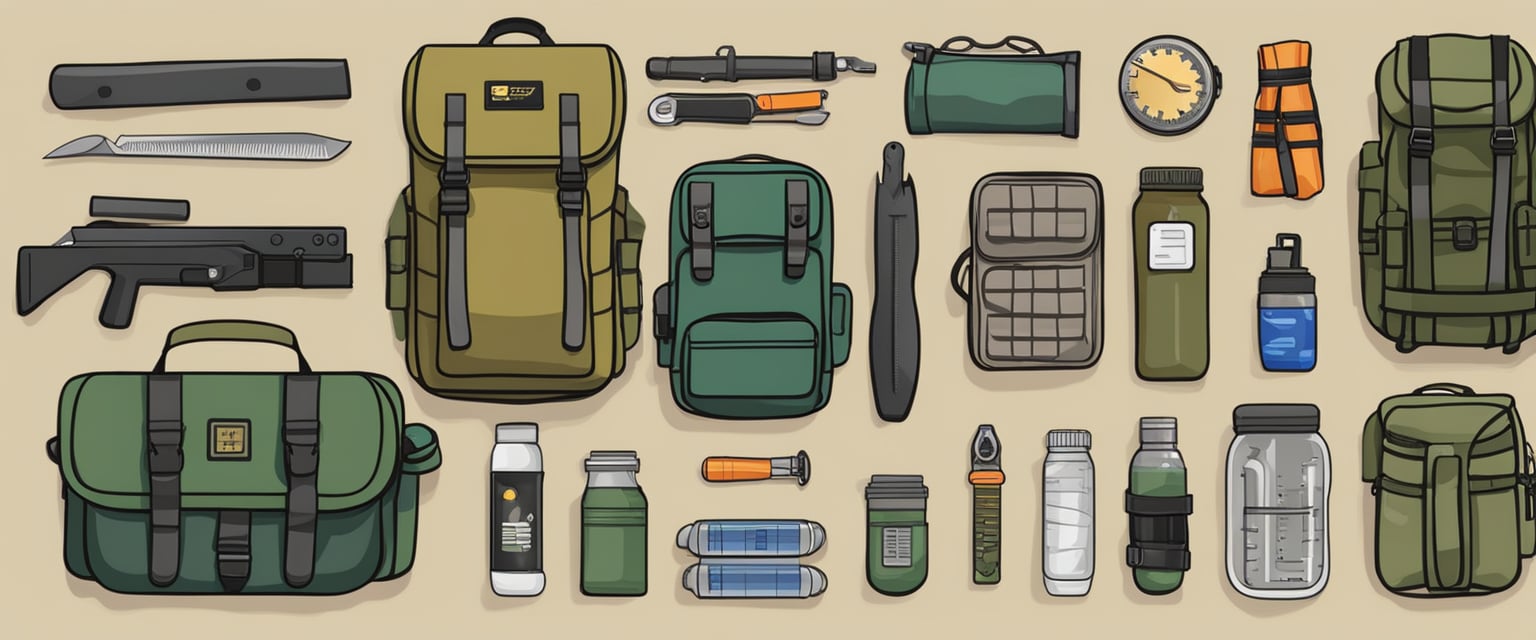
Before choosing between a survival kit or a bug out bag, consider the specifics of the environment and the nature of emergencies you may face.
Natural Disasters
In the wake of natural disasters, your needs can vary greatly depending on the type of event. For earthquakes, a compact survival kit with essentials like water, food rations, and a first-aid kit could be sufficient for immediate needs.
- Hurricanes and floods may require a bug out bag that offers:
- Extended food and water supply
- Waterproof protective gear
- Multipurpose tools
An assessment of your region’s most common natural disasters will guide you in tailoring the contents accordingly.
Urban vs. Wilderness Survival
Your survival strategy will differ based on whether you’re in an urban or wilderness setting.
- In urban environments, anticipate scenarios like being stranded without power or having to evacuate quickly. Your kit should be portable and contain items such as:
- Flashlight
- Emergency whistle
- Dust masks
Wilderness survival, on the other hand, calls for a more robust bag. You’ll need items that address shelter, navigation, and wildlife encounters.
- A wilderness-focused bug out bag might include:
- Tent or emergency bivy
- Compass or GPS device
- Bear spray
Practical Tips for Packing and Maintenance
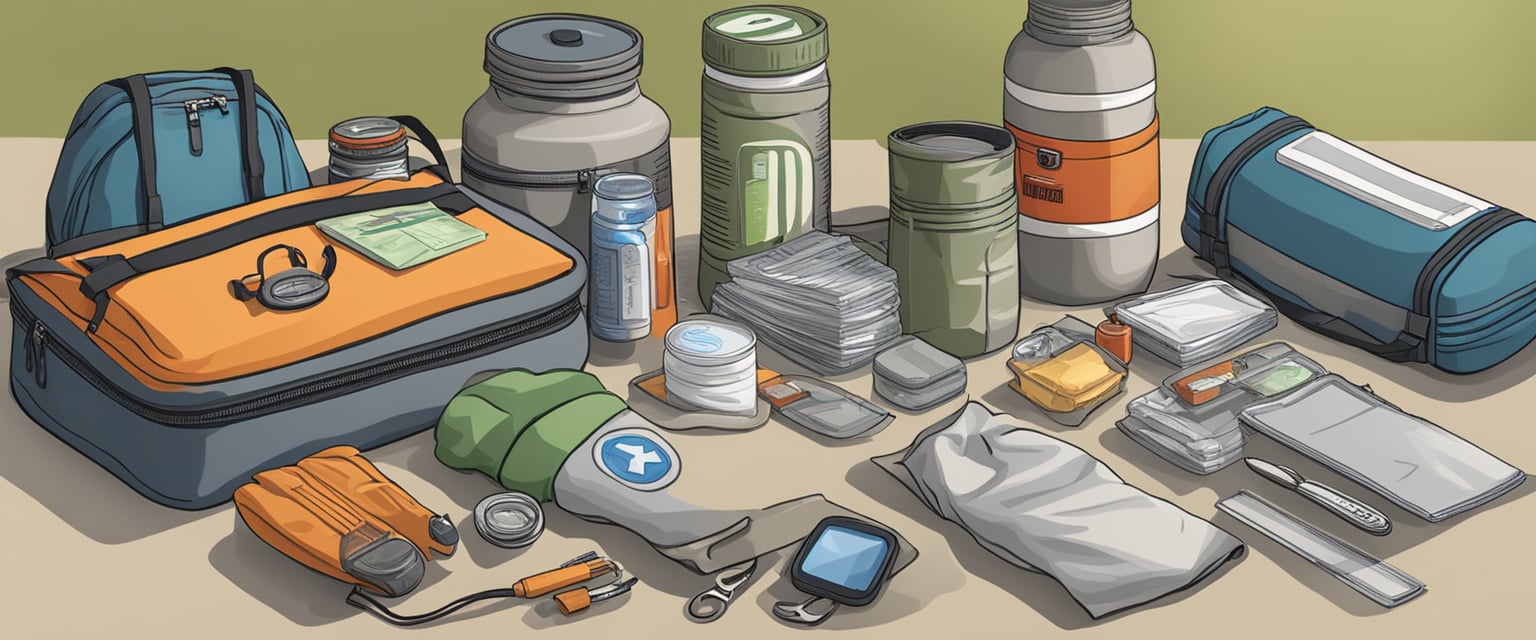
When putting together and caring for your survival kit or bug out bag, it’s essential to stay organized and up-to-date. Regular maintenance ensures your gear remains reliable in an emergency.
Regular Checks and Item Rotation
Frequency of Checks: You should thoroughly inspect your kit at least every six months. Make a habit of checking expiration dates and the condition of your items.
- Expiration Dates:
- Food: Replace any items nearing the end of their shelf life.
- Medicines: Keep an eye on the expiration dates and rotate them out as needed.
Condition of Equipment:
- Batteries: Test and replace them regularly to avoid leaks and ensure functionality.
- Tools and Gear: Examine for any wear and tear, rust, or damage that could compromise their use.
Customization for Individual Needs
Personalize Your Kit: Tailor your kit to fit personal and geographical necessities. Adjust your supplies based on the season and climate you’re in.
- Medical Needs: If you have specific health conditions, include any required prescriptions or equipment.
Geographic Considerations:
- If you live in an earthquake-prone area, add gear like dust masks and sturdy gloves.
- For wet climates, waterproof containers and clothing are a must.
Seasonal Adjustments:
- Winter: Pack extra insulation, like thermal blankets and hand warmers.
- Summer: Include sunscreen, insect repellent, and a wide-brimmed hat.
Decision Criteria for Choosing Between a Survival Kit and Bug Out Bag

When deciding between a survival kit and a bug out bag, consider how long you’ll need it, how easy it needs to be to carry, and the specific emergencies it’s tailored for.
Duration of Use
Survival Kit:
- Intended for short-term situations; often designed for 72 hours.
- Includes essentials like water, food rations, and basic first aid.
Bug Out Bag:
- Built for longer-term use, potentially over several days.
- Contains more comprehensive supplies, such as shelter and additional food and water options.
Portability Requirements
Survival Kit:
- Compact and lightweight; designed to be highly portable.
- Can be easily stored in a car, office, or at home without taking up much space.
Bug Out Bag:
- Larger and might be heavier due to more items.
- Requires comfortable straps and durable materials for carrying over distances.
Potential Scenarios and Threat Assessment
Survival Kit: Ideal Scenarios:
- Natural disasters with a brief evacuation time.
- Situations where you’ll have access to additional resources within a short period.
Bug Out Bag: Ideal Scenarios:
- Extended power outages, severe storms, or circumstances where returning home isn’t an option.
- Scenarios that force you to be self-reliant for an extended time.
Frequently Asked Questions
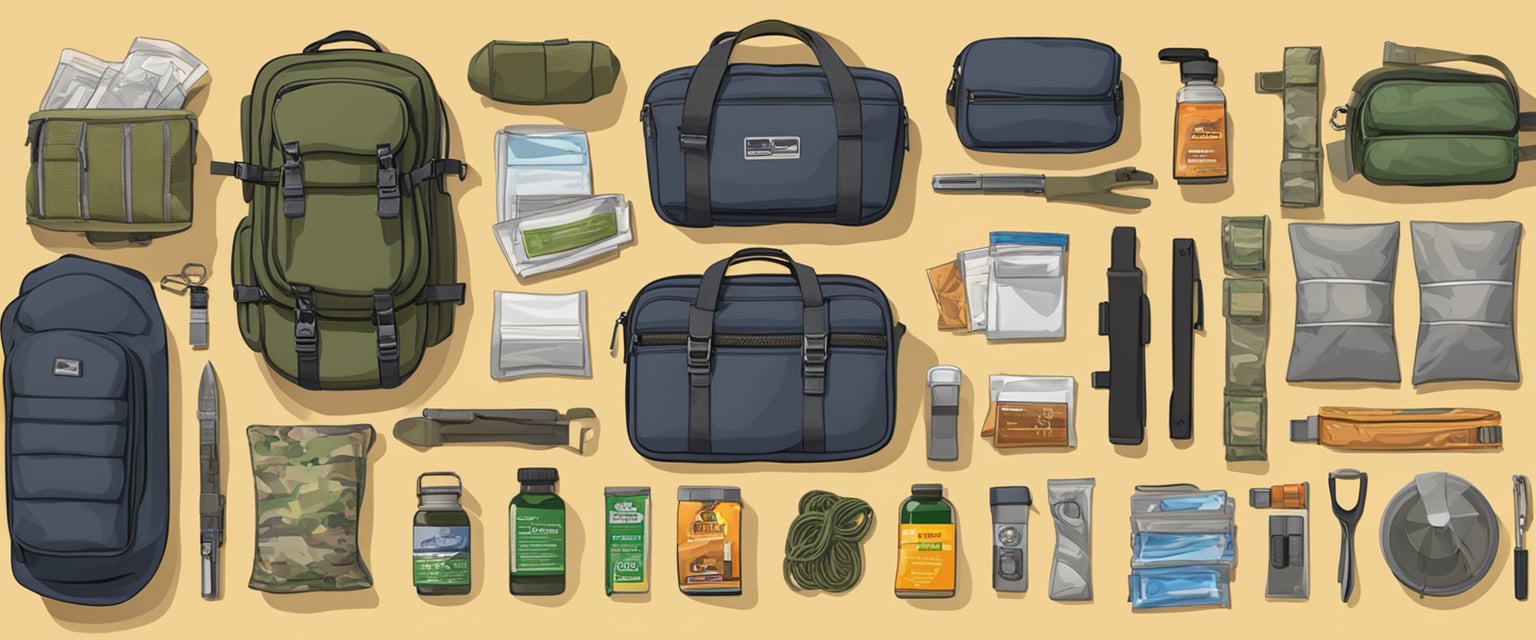
When choosing between a survival kit and a bug out bag, it’s important to understand their purposes and the essentials they contain. This FAQ section addresses common queries to help you make informed decisions for your emergency preparedness.
What essentials should I pack in a bug out bag for a quick evacuation?
For a swift evacuation, your bug out bag should include essentials like water, non-perishable food, a first-aid kit, a flashlight, extra batteries, a multi-tool, personal hygiene items, a map and compass, emergency blankets, and important personal documents. Clothing appropriate for the climate and sturdy footwear are also vital.
Can a bug out bag suffice as a long-term survival kit or is it for short-term emergencies only?
A bug out bag is designed for short-term emergencies, typically to last 72 hours. It contains items essential for immediate survival and evacuation. For long-term scenarios, you’ll require a more extensive survival kit with additional supplies, considering food, water, shelter, and safety for a prolonged period.
What are top priority items to include in a home emergency survival kit?
Your home emergency survival kit should prioritize water, at least a three-day supply; non-perishable food; a first-aid kit; a flashlight and batteries; a whistle to signal for help; a dust mask; plastic sheeting and duct tape for shelter; garbage bags and plastic ties for personal sanitation; a wrench or pliers to turn off utilities; and local maps.
Are there significant differences in the contents of a bug out bag versus a 72-hour emergency kit?
While a bug out bag and a 72-hour emergency kit have similar contents, the bug out bag is tailored for mobility and rapid evacuation, often lighter and more compact. A 72-hour kit, geared for home use, may include a broader range of supplies, like larger amounts of water and food, comprehensive medical supplies, and tools for temporary home repairs.
How do I determine the right size and type of bag for my personalized bug out kit?
Choose a bag that’s large enough to hold your essential items but small enough to carry comfortably. Look for durable, water-resistant materials, multiple compartments for organization, and an ergonomic design that distributes weight evenly. Consider the duration of use and personal carrying capacity when selecting your bag.
Should I invest in pre-made survival kits or assemble my own based on specific needs?
Consider a pre-made kit if you’re looking for convenience and a basic level of preparedness. However, for a kit that fits your specific needs, location, skill level, and potential disaster scenarios, assembling your own may be more effective. Personalization can create a kit better suited to your unique situation.

Leave a Reply